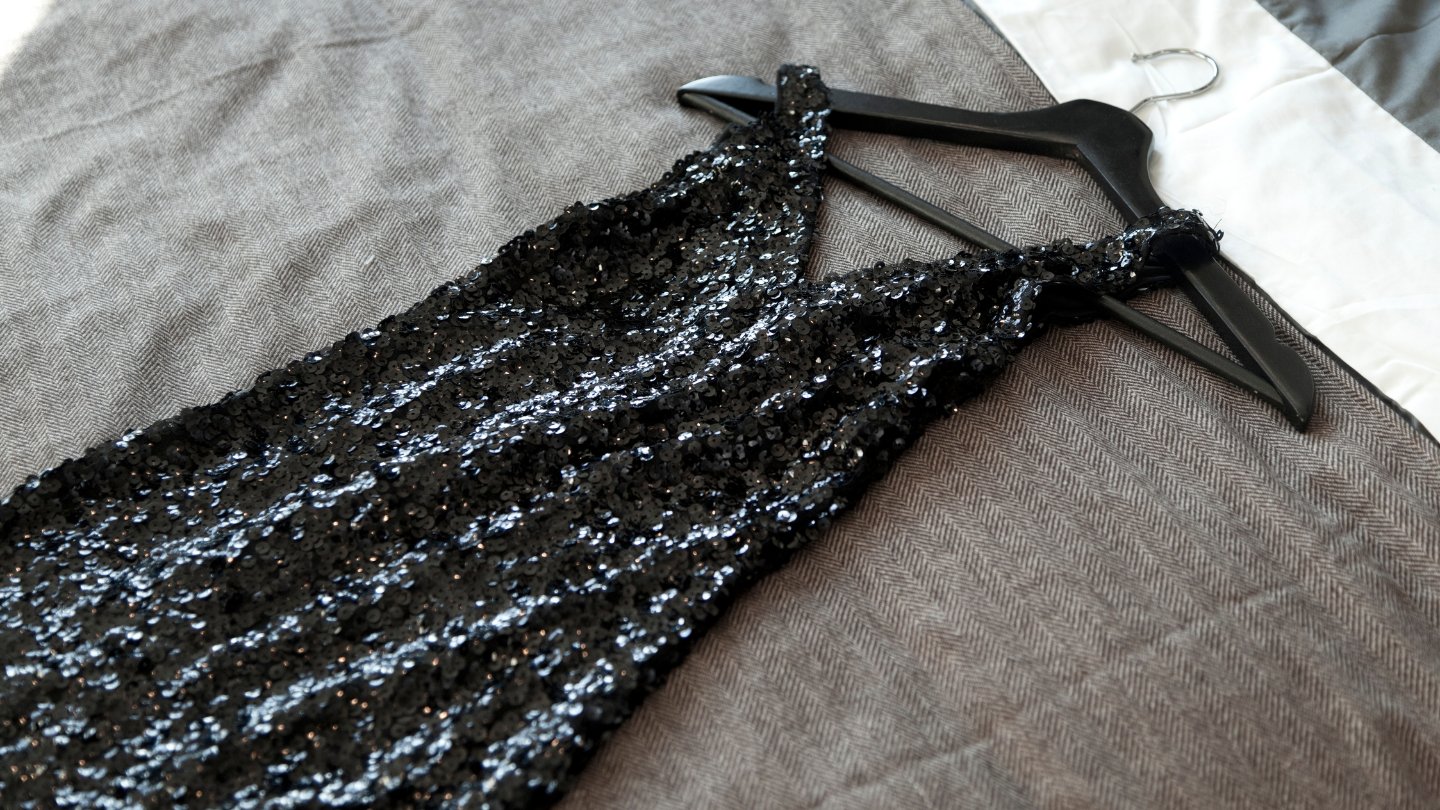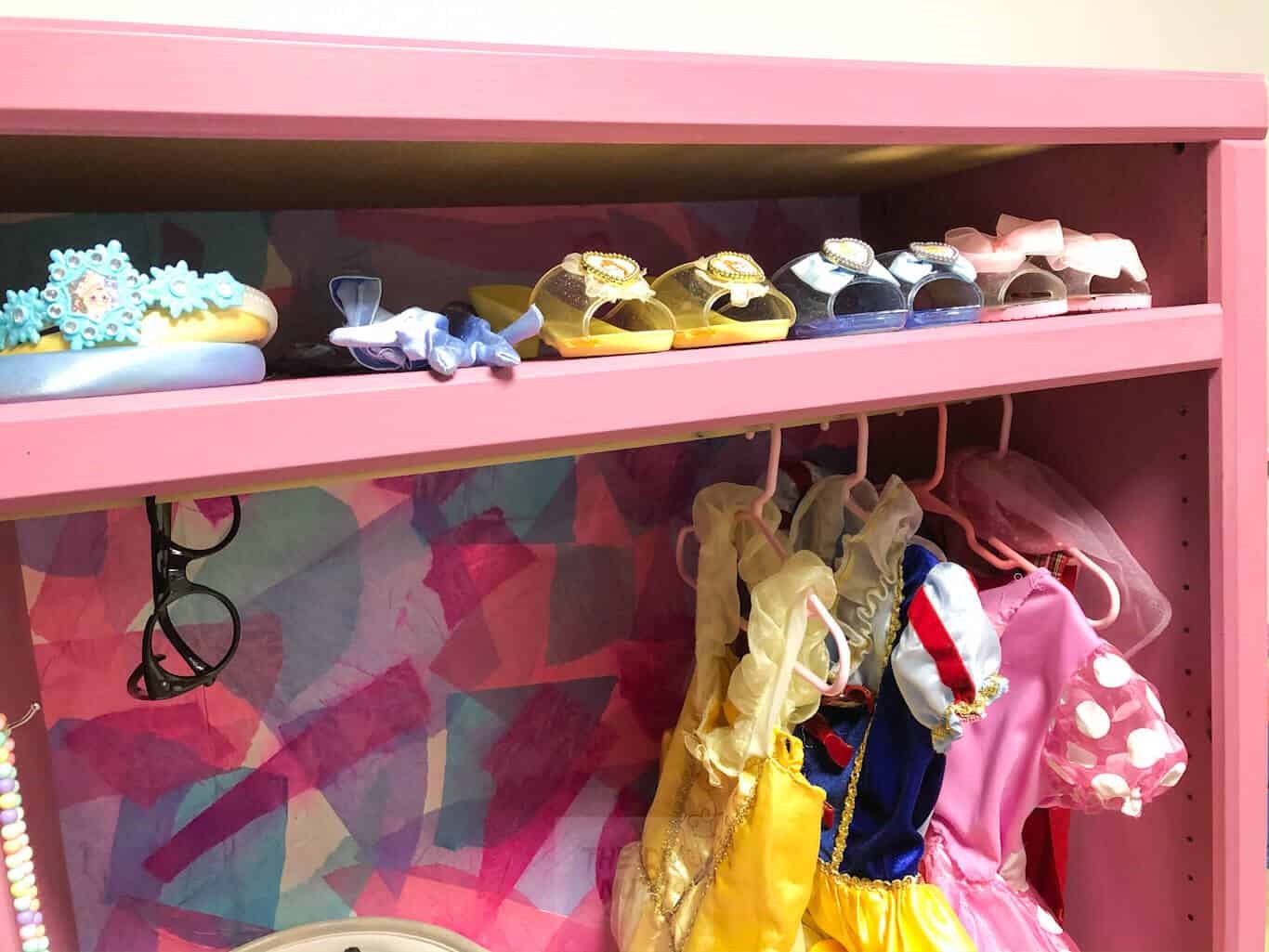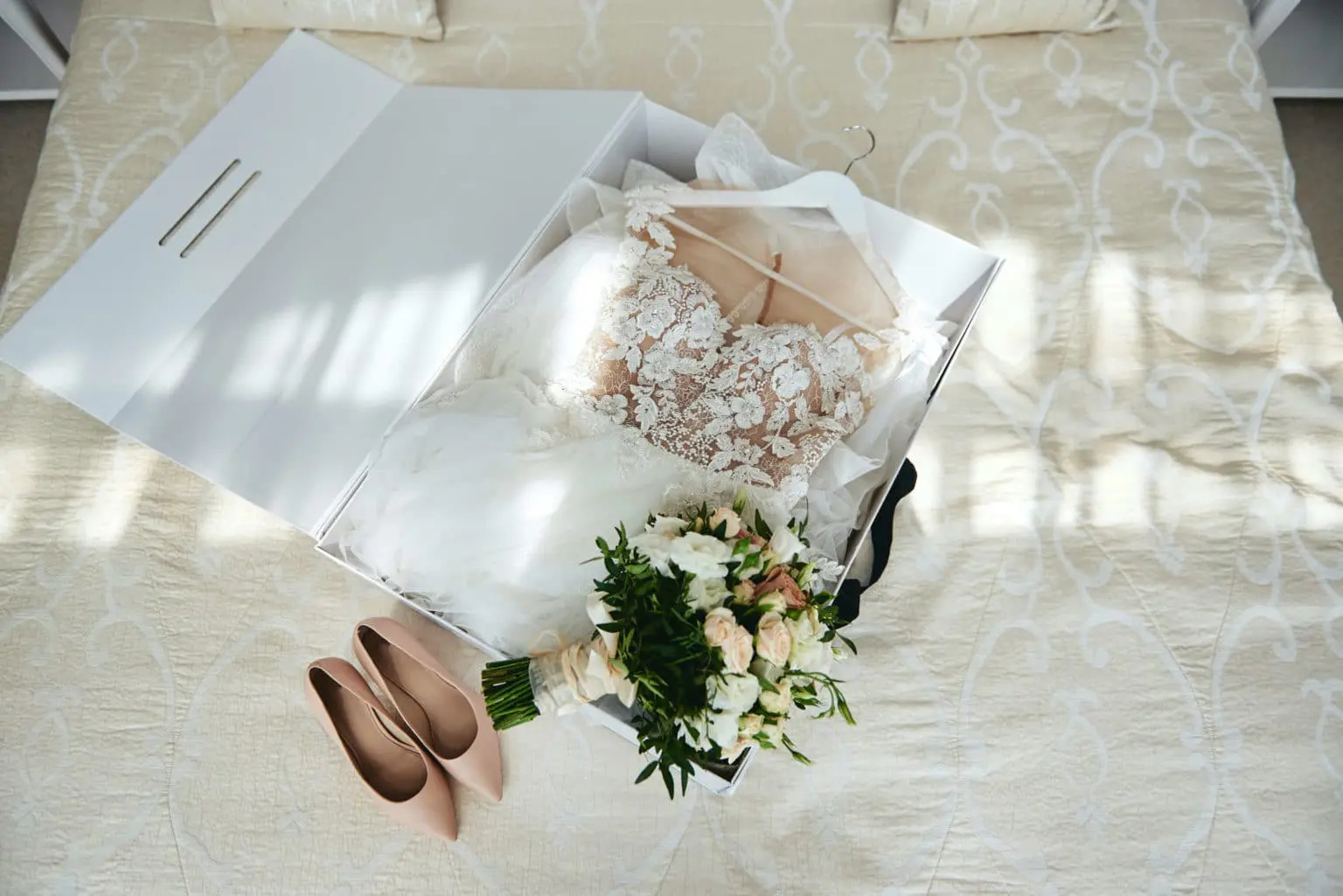

Articles
How To Store Dresses
Modified: March 21, 2024
Learn the best techniques for storing dresses and preserving their quality in this informative collection of articles.
(Many of the links in this article redirect to a specific reviewed product. Your purchase of these products through affiliate links helps to generate commission for Storables.com, at no extra cost. Learn more)
Introduction
Welcome to our comprehensive guide on how to store dresses! Whether you have a collection of vintage gems, a cherished wedding gown, or simply want to keep your everyday dresses in pristine condition, proper storage is essential to prolong their lifespan and maintain their beauty.
Proper dress storage involves more than just hanging them up in the closet or stashing them away in a drawer. It requires careful consideration of factors such as fabric type, storage methods, and environmental conditions. By following the tips and techniques outlined in this article, you can ensure that your dresses remain well-preserved and ready to wear whenever you need them.
From organizing your dresses by occasion or season to utilizing specialized storage containers, our guide will cover everything you need to know to keep your dresses in top shape. We will also provide insights into cleaning and preservation techniques, as well as tips for protecting your dresses from environmental factors such as sunlight, humidity, and pests.
Keep in mind that the storage methods may vary depending on the type of dress and its material. For delicate fabrics like silk or lace, different precautions and storage techniques will be required compared to more durable materials like cotton or polyester. We will provide specific guidance for each scenario, ensuring that you have the knowledge needed to preserve all types of dresses.
So, whether you’re a fashion enthusiast, a bride-to-be, or simply someone looking to keep their dresses in pristine condition, our guide is here to help. Let’s dive in and discover the best practices for storing your dresses and keeping them looking their best!
Key Takeaways:
- Proper dress storage involves careful consideration of fabric type, occasion, and season. Whether folding or hanging, ensure dresses are clean, dry, and protected from environmental factors to maintain their quality and longevity.
- Utilize organizers, labeling systems, and proper cleaning techniques to protect dresses from sunlight, moisture, and pests. Implement long-term storage strategies to ensure dresses remain in excellent condition for years to come.
Read more: How To Store Dress Pants
Choosing the Right Storage Method
When it comes to storing dresses, one size does not fit all. Different types of dresses require different storage methods to maintain their shape, prevent wrinkles, and avoid damage. Here are some factors to consider when choosing the right storage method for your dresses:
- Fabric Type: The first thing to consider is the fabric of your dresses. Delicate fabrics like silk, chiffon, and lace require extra care to prevent snags, tears, and stretching. Sturdy fabrics like cotton and polyester are generally more forgiving but still benefit from proper storage methods.
- Length: The length of your dresses also plays a role in determining the most suitable storage method. Long dresses, such as evening gowns and maxi dresses, may be more prone to creasing and wrinkles and may require specialized hangers or garment bags to maintain their shape.
- Frequency of Use: If you frequently wear a particular dress, it may be best to hang it in your closet for easy accessibility. On the other hand, if a dress is for special occasions or seasonal wear, it may benefit from folded storage or placement in a storage container until needed.
Now that you’ve considered the specific factors relating to your dresses, let’s explore the two primary storage methods: folding and hanging.
Folding vs. Hanging
Folding is a common storage method for dresses, especially those made from delicate fabrics prone to wrinkling. Here are some tips for properly folding and storing dresses:
- Always start with a clean and dry dress to prevent any stains or odors from setting in during storage.
- Use acid-free tissue paper to place between folds and layers of the dress. This helps to prevent creasing and preserves the fabric’s integrity.
- Before folding, gently smooth out any wrinkles or pleats in the dress. If needed, use a fabric steamer to remove stubborn creases.
- Choose a storage container that is appropriate for the size and length of the dress. Avoid packing the container too tightly, as this can cause unnecessary wrinkling.
- Label the container with the dress’s description or occasion to easily locate it when needed.
Hanging is another popular storage method, especially for dresses that retain their shape better when hung. Here are some tips for properly hanging and storing dresses:
- Invest in quality, non-slip hangers to prevent dresses from slipping off or stretching out.
- Choose the appropriate hanger based on the dress’s neckline and straps. Wide-shoulder hangers are ideal for dresses with wide necklines or heavy embellishments, while padded hangers can protect delicate fabrics.
- Let the dress hang freely, avoiding overcrowding in the closet to prevent wrinkles and distortion.
- Consider using garment bags for added protection, especially if the dress is made of delicate fabric or has intricate details.
- Store dresses in a cool, dry, and well-ventilated area to prevent moisture build-up and the growth of mold or mildew.
Ultimately, the choice between folding and hanging comes down to the specific needs of your dresses. A combination of both methods may be necessary depending on the variety of dresses in your collection.
Now that you have a better understanding of the factors to consider when choosing a storage method and the options of folding and hanging, you can select the most appropriate method for each of your dresses. In the next sections, we will delve into the practicalities of gathering supplies, organizing your dresses, and utilizing various storage techniques to keep your dresses in optimal condition.
Folding vs. Hanging
When it comes to storing your dresses, the decision between folding and hanging depends on several factors, including the type of fabric, dress length, and the frequency of use. Let’s explore the pros and cons of each method to help you make an informed decision:
Folding:
Folding is a popular storage method, especially for dresses made from delicate fabrics that are prone to wrinkling. Here are some advantages of folding:
- Wrinkle Prevention: By folding your dresses, you can minimize the risk of creases and wrinkles that can occur when they hang. This is particularly beneficial for fabrics like silk, chiffon, and lace.
- Space Optimization: Folding allows you to maximize your storage space. You can stack folded dresses in drawers or storage containers, making efficient use of limited space.
- Protection: When folded and stored properly, dresses are less exposed to dust, light, and potential damage from hangers or other garments hanging nearby.
However, there are also some considerations to keep in mind when it comes to folding:
- Crease Management: Folding dresses requires extra attention to prevent deep creases. Using acid-free tissue paper between folds and layers can help minimize this issue.
- Accessibility: If you frequently wear a particular dress, folding it may not be the most convenient option, as it can be time-consuming to retrieve and re-fold each time you want to wear it.
- Length: Long dresses may be more challenging to fold neatly and may require larger storage containers or specialized folding techniques to avoid excessive wrinkling.
Hanging:
Hanging dresses is a preferred method for garments that maintain their shape well and are frequently worn. Here are some advantages of hanging:
- Easy Accessibility: Hanging dresses in your closet allows for quick and easy access. You can see your options at a glance and select the dress you want to wear without having to dig through folded garments.
- Minimal Wrinkling: Hanging dresses on suitable hangers can minimize wrinkles, especially for fabrics that are less prone to creasing, such as cotton or polyester.
- Showcasing the Dress: Hanging your dresses can act as a display, allowing you to appreciate their beauty and easily plan outfits.
However, there are also some considerations when it comes to hanging your dresses:
- Stretching: Hanging dresses on unsuitable hangers or inappropriately can lead to stretching and distortion, especially for lightweight or heavy garments.
- Space Requirements: Hanging dresses can take up more space in your closet, particularly if you have limited hanging space available.
- Fabric Wear: Some delicate fabrics, such as silk or satin, may be more prone to damage or snagging when hung. In such cases, extra precautions, such as using padded hangers or garment bags, should be taken.
Ultimately, the decision between folding and hanging depends on the specific needs of your dresses and your storage space. You may choose to fold dresses made from delicate fabrics or those that won’t be worn for an extended period. Hang dresses that you wear frequently or that maintain their shape best when hung.
Consider a combination of both methods to optimize your storage space and preserve the quality of your dresses. In the next sections, we will explore the practical aspects of gathering supplies, organizing your dresses, and utilizing various storage techniques to keep your dresses in optimal condition.
Gathering Supplies
Before you begin the process of storing your dresses, it’s important to gather the necessary supplies. Having the right tools and materials will make the storage process smoother and help you maintain the quality of your dresses. Here are some essential supplies to consider:
- Hangers: Invest in good-quality hangers that are sturdy and appropriate for the type of dress you plan to hang. Choose hangers with wide shoulders for dresses with wide necklines or heavy embellishments, and opt for padded hangers for delicate fabrics.
- Garment Bags: Garment bags provide an extra layer of protection for your dresses, particularly those made from delicate fabrics like silk or lace. Look for garment bags made from breathable materials, such as cotton or nylon, to prevent moisture buildup.
- Storage Containers: If you plan to fold and store your dresses, consider investing in storage containers that are the appropriate size for your garments. Opt for containers made from breathable materials and ensure they are clean and dry before storing your dresses inside them.
- Acid-Free Tissue Paper: Acid-free tissue paper should be used when folding your dresses. It helps to prevent creasing and absorbs any excess moisture, keeping your dresses in pristine condition.
- Drawer Dividers and Organizers: If you plan to store your dresses in drawers, invest in drawer dividers and organizers to keep them neat and separate from other garments. This will help prevent wrinkling and make it easier to locate specific dresses.
- Labels and Inventory Systems: Use labels or an inventory system to keep track of your dresses. This will make it easier to find a specific dress when needed and ensure you rotate your dresses to prevent them from being forgotten or neglected.
- Cleaning Supplies: Before storing your dresses, make sure they are clean and free from any stains or odors. Have appropriate cleaning supplies on hand, such as gentle detergents or dry cleaning kits, to properly clean your dresses before storage.
By gathering these supplies in advance, you will have everything you need to properly store your dresses and protect them from damage. Additionally, having these supplies readily available will make it easier to organize and maintain your dress collection over time.
Remember, the specific supplies you need may vary depending on the type of dresses you have and your personal preferences. Take into account the fabric type, length, and specific storage method you plan to use when selecting your supplies.
Now that you have gathered all the necessary supplies, it’s time to move on to organizing your dresses. In the next section, we will explore different strategies for organizing your dresses by occasion or season, allowing for easy access and efficient storage.
Read more: How To Store Prom Dresses
Organizing by Occasion or Season
One of the key aspects of effective dress storage is organizing your collection in a way that allows for easy accessibility and efficient rotation. By organizing your dresses by occasion or season, you can quickly find the dress you need for any specific event or time of the year. Here are some tips for organizing your dresses:
1. Occasion-based Organization:
Organizing dresses by occasion can help you easily locate the dress you need, whether it’s for a formal event, a casual outing, or a special occasion. Here’s how you can implement this strategy:
- Create Categories: Divide your dresses into different categories based on the occasions they are suitable for, such as weddings, parties, work, or everyday wear.
- Dedicated Storage for Each Category: Allocate separate storage areas, such as containers or sections in your closet, for each category. This will keep your dresses organized and prevent them from getting mixed up.
- Labeling: Use labels or tags to identify each category, making it easy to locate specific dresses at a glance.
- Rotate Seasonally: Periodically assess your dress collection and rotate dresses between storage areas based on the upcoming seasons or events. This ensures that the most appropriate dresses are readily available.
2. Seasonal Organization:
Separating your dresses by seasons allows you to optimize your storage space and easily access the appropriate dresses for the current weather conditions. Follow these steps to organize your dresses by season:
- Divide by Season: Sort your dresses into categories for each season, such as spring, summer, fall, and winter.
- Store Out-of-Season Dresses: Utilize storage containers or dedicate sections of your closet to store dresses that are not currently in season. This frees up space for the dresses you will be wearing during the present season.
- Protect from Environmental Factors: Consider using garment bags or covers to protect dresses that are not in season from dust, light, and potential damage.
- Rotate Seasonally: As the seasons change, switch out the dresses in your main storage area with the appropriate seasonal dresses. This ensures your wardrobe is always in line with the current weather.
By organizing your dresses based on occasion or season, you can maintain an efficient and accessible collection. Whether it’s selecting the perfect dress for a special event or finding a weather-appropriate outfit, having an organized wardrobe will make the process much easier.
In the next section, we will explore proper cleaning and preservation techniques to ensure that your dresses remain in excellent condition during storage.
Proper Cleaning and Preservation Techniques
Before storing your dresses, it’s crucial to ensure that they are clean and properly preserved to prevent any stains, odors, or damage. Here are some important cleaning and preservation techniques to follow:
1. Read the Care Instructions:
Start by checking the care instructions on the labels of your dresses. Different fabrics may require specific cleaning methods, such as handwashing, dry cleaning, or machine washing on a gentle cycle. Follow the recommended care instructions to avoid damaging the fabric.
2. Treat Stains:
If you spot any stains on your dresses, address them before storing. Treat stains as soon as possible using appropriate stain removal techniques or by taking your dresses to a professional cleaner. Leaving stains untreated for a prolonged period can lead to permanent damage.
3. Clean Thoroughly:
Ensure that your dresses are thoroughly cleaned before storage. This includes removing any dirt, sweat, or other residues that may have accumulated. Pay special attention to areas like underarms, where deodorant and perspiration can build up.
4. Allow Proper Drying Time:
Before storing your dresses, make sure they are completely dry. Moisture can lead to mildew, mold growth, and fabric damage. Hang your dresses in a well-ventilated area or use a fabric-safe drying method to ensure they are fully dry before storage.
5. Preserve with Acid-Free Tissue:
Avoid direct contact between the fabric of your dresses by utilizing acid-free tissue paper. Place a sheet of tissue paper between each fold and layer to prevent creasing and minimize the risk of color transfer or friction damage.
6. Avoid Plastic Covers:
Avoid using plastic covers or bags made of non-breathable materials for long-term storage, as they can trap moisture and lead to mildew or fabric discoloration. Instead, opt for breathable garment bags made of cotton or nylon to protect your dresses from dust and light.
7. Consider Moth Repellents:
If you live in an area prone to moth infestation, consider using natural moth repellents like lavender sachets or cedar blocks to protect your dresses from potential damage. These natural options are safer than chemical mothballs and can help deter pests.
By following these proper cleaning and preservation techniques, you can ensure that your dresses stay fresh, vibrant, and in excellent condition during storage. Next, let’s explore various storage containers and bags that can help protect your dresses from environmental factors.
Using Storage Containers and Bags
Properly storing your dresses in appropriate containers and bags is essential for maintaining their quality and protecting them from environmental factors. Here are some options for utilizing storage containers and bags:
1. Plastic or Fabric Storage Containers:
Plastic or fabric storage containers provide a convenient and protective option for storing folded dresses. Here’s what to keep in mind:
- Size and Capacity: Choose containers that are the right size for your dresses. They should provide enough space without compressing the garments.
- Stackability: Opt for containers that are stackable to maximize vertical storage space.
- Breathability: Look for containers with breathable lids or ventilation holes to prevent moisture buildup and allow air circulation.
- Clear or Labeled: Consider using transparent containers or labeling them to easily identify the contents without having to open each one.
2. Garment Bags:
Garment bags are an excellent option for hanging dresses and protecting them from dust and light. Here’s what to consider when using garment bags:
- Material: Choose garment bags made of breathable materials, such as cotton or nylon, to allow air circulation and prevent moisture buildup.
- Length and Width: Ensure that the garment bags are long enough to cover the entire dress, including any trains or delicate details. Opt for wider bags that allow for more space around the dress to prevent creasing.
- Zippered or Sealed: Select garment bags with secure closures, such as zippers or Velcro, to keep out dust and prevent snagging.
- Padded Options: For extra protection, consider using padded garment bags for delicate dresses or those with intricate embellishments.
3. Vacuum-Sealed Bags:
Vacuum-sealed bags are a popular option for maximizing storage space and protecting dresses from dust and pests. However, they may not be suitable for all dress types, particularly those made from delicate fabrics. Here’s what to keep in mind:
- Considerations: Vacuum-sealed bags are best for long-term storage and are suitable for dresses that can withstand compression without being damaged.
- Prioritize Durability: Use high-quality vacuum-sealed bags to ensure they provide adequate protection and maintain an airtight seal.
- Avoid Overpacking: Do not overfill or tightly pack the bags to prevent excessive compression and potential distortion of the dresses.
- Use with Caution: Be cautious when using vacuum-sealed bags for dresses made from delicate fabrics, as compression may cause wrinkles or affect the shape of the garments.
Whether you choose storage containers or garment bags, make sure to clean and dry your dresses thoroughly before storing them. This will prevent any potential odors or stains from setting in and ensure the garments remain fresh during storage.
In the next section, we will discuss the storing of dresses in wardrobes or closets and how to make the most of the available space.
Store dresses in a cool, dry place away from direct sunlight to prevent fading and damage. Use padded hangers to maintain the shape of the shoulders and avoid stretching. Cover with garment bags to protect from dust and moths.
Storing in Wardrobes or Closets
Utilizing wardrobes or closets for dress storage provides a convenient and accessible solution, especially for frequently worn dresses. Here are some tips for maximizing space and preserving the quality of your dresses when storing them in wardrobes or closets:
1. Declutter and Clean:
Before storing your dresses, declutter your wardrobe or closet to create more space. Remove any items that are no longer needed or that do not belong in the space. Give the area a thorough cleaning to remove dust and create a fresh environment for your dresses.
2. Categorize and Arrange:
Consider organizing your dresses by category or type. This can include grouping them by occasion, color, or style. Categorizing your dresses will make it easier to locate specific items and maintain an organized wardrobe.
3. Optimize Hanging Space:
Make the most of your hanging space by using appropriate hangers and maximizing vertical storage. Here are some tips:
- Invest in Quality Hangers: Use sturdy hangers that are designed to support the weight and shape of your dresses. Avoid wire hangers, as they can lead to stretching and distortion.
- Choose the Right Hanger: Select hangers that suit the specific needs of your dresses. Wide-shouldered hangers are ideal for dresses with wide necklines or heavy embellishments, while padded hangers provide extra protection for delicate fabrics.
- Organize by Length: Arrange your dresses in the closet by length, with shorter dresses towards the front and longer dresses towards the back. This will ensure that all of your dresses remain visible and easily accessible.
- Avoid Overcrowding: Leave enough space between dresses to prevent overcrowding and ensure that they hang freely. This helps to prevent wrinkles and maintain the shape of the garments.
4. Fold Strategically:
For dresses that are not suitable for hanging or to save space, fold them neatly and place them in designated storage containers or on shelves. Use acid-free tissue paper between folds to minimize creasing and protect the fabric.
5. Utilize Top Shelves and Drawers:
If your wardrobe or closet has top shelves or drawers, make use of them for storing less frequently worn or out-of-season dresses. This helps to free up hanging space for dresses that are in regular rotation.
6. Maintain a Climate-Controlled Environment:
Avoid storing dresses in areas prone to extreme temperature fluctuations, high humidity, or excessive moisture. Ideally, maintain a cool, dry, and well-ventilated environment to preserve the quality of your dresses.
By following these tips, your dresses will be well-organized, easily accessible, and protected within your wardrobe or closet. In the next section, we will explore how to further enhance organization by using drawer dividers and labeling systems.
Read more: How To Store Formal Dresses
Utilizing Drawer Dividers and Organizers
To enhance the organization and functionality of your dress storage, drawer dividers and organizers can be incredibly useful. These tools help keep your dresses neatly arranged and prevent them from getting tangled or wrinkled. Here are some tips for utilizing drawer dividers and organizers:
1. Assess Drawer Space:
Before getting started, evaluate the available drawer space and consider the number of dresses you plan to store in each drawer. This will help determine the size and type of organizers needed.
2. Select the Right Dividers and Organizers:
Choose dividers and organizers that suit the dimensions of your drawers and the specific needs of your dresses. Here are some options to consider:
- Drawer Dividers: Dividers help separate dresses within the drawer, preventing them from becoming entangled or wrinkled. Adjustable dividers allow you to customize compartments based on the size and number of dresses.
- Fabric Storage Cubes: Fabric storage cubes with compartments or slots are ideal for organizing smaller items like accessories, belts, or scarves alongside your dresses.
- Acrylic Drawer Organizers: Transparent acrylic organizers make it easy to see and access your dresses. They typically come in various sizes and configurations, allowing you to create compartments tailored to your specific storage needs.
3. Fold and Sort Dresses:
Prioritize folding your dresses neatly before placing them in the drawer dividers or organizers. This will help enhance the organization and appearance of your collection. Sort dresses based on their categories, such as sleeveless, short sleeves, or long sleeves, or any other criteria that make sense for your wardrobe.
4. Place Dresses in Drawers:
Once your dresses are folded and sorted, place them in the designated compartments within the drawer dividers or organizers. Arrange dresses with similar lengths, styles, or colors together to make them easier to locate.
5. Utilize Additional Features:
Make the most of additional features, such as accessory hooks or slots, within the drawer dividers or organizers. This allows you to keep small accessories like jewelry or hair accessories organized and easily accessible alongside your dresses.
6. Label or Tag:
Consider labeling or tagging each section of the drawer dividers or organizers for quick and easy identification of specific dresses or accessories. This can be especially helpful when you have a larger wardrobe or if you frequently rotate your dresses based on the season or occasion.
Dedicated drawer dividers and organizers can help transform a cluttered drawer into an organized space, making it effortless to locate and retrieve your dresses. They also add an extra layer of protection by keeping dresses separate and reducing the risk of wrinkles or damage.
In the next section, we will discuss the importance and techniques of labeling and inventory systems to keep track of your dress collection.
Labeling and Inventory Systems
Labeling and implementing an inventory system is an effective way to keep track of your dress collection and ensure easy access to specific dresses when needed. Here’s how you can create a labeling and inventory system for your dresses:
1. Categorize Your Dresses:
Begin by categorizing your dresses based on your preferred criteria, such as occasion, season, or style. This will provide a framework for organizing and labeling your dresses.
2. Label Storage Containers and Bags:
If you are using storage containers or garment bags, label each one clearly. Use adhesive labels or tags to identify the contents of each container or bag. This will save you time and frustration when searching for specific dresses in the future.
3. Label Closet or Drawer Compartments:
If you organize your dresses within your closet or drawer using dividers or organizers, label each compartment based on the dress category or style it holds. This will make it easy to locate dresses at a glance and keep your collection organized.
4. Create a Dress Inventory:
Developing a dress inventory allows you to keep track of the dresses you own. You can create a spreadsheet or use inventory management software to record important details such as dress descriptions, sizes, colors, and any specific notes or comments.
5. Assign Unique IDs or Codes:
Assign unique IDs or codes to each dress in your inventory system. This can be as simple as using numerical labels or alphanumeric codes. Having unique identifiers for each dress will make it easier to locate specific items and track their movement within your collection.
6. Update and Maintain Your Inventory:
Regularly update your dress inventory when you purchase new dresses or remove items from your collection. Note any alterations, repairs, or cleaning done to each dress. This ongoing maintenance will ensure that your inventory remains accurate and up to date.
7. Utilize Digital Tools:
Consider using digital tools such as dress management apps or online platforms that allow you to create virtual dress inventories. These tools often come with features like photo uploads, customizable fields, and search functionalities, making it easier to manage and track your collection.
Labeling and implementing an inventory system may require some initial effort, but it will significantly streamline your dress storage and retrieval process. With clear labels and a comprehensive inventory, you can easily locate specific dresses, track their condition, and stay organized.
In the next section, we will discuss how to protect your dresses from environmental factors to ensure their longevity and optimal condition during storage.
Protecting Dresses from Environmental Factors
To ensure the long-term preservation and quality of your dresses, it’s important to protect them from various environmental factors that can cause damage. Here are some tips for safeguarding your dresses:
1. Sunlight:
Exposure to direct sunlight can cause fading and discoloration of fabrics. To protect your dresses, keep them away from windows or areas with direct sunlight. If necessary, cover windows with curtains or blinds to limit sun exposure.
2. Humidity and Moisture:
High humidity levels can lead to mold, mildew, and fabric damage. Store your dresses in a cool and dry environment with low humidity levels. Avoid storing dresses in damp basements or attics. Consider using dehumidifiers or moisture absorbers to maintain the ideal humidity level.
3. Temperature:
Extreme temperatures, both hot and cold, can affect the integrity of fabrics. Store your dresses in a climate-controlled environment with stable temperatures. Avoid storing dresses in areas prone to extreme temperature fluctuations, such as garages or storage units.
4. Air Circulation:
Proper air circulation helps prevent moisture buildup and ensures the freshness of your dresses. Avoid overcrowding your storage space to allow air to flow freely. If using garment bags or covers, make sure they are breathable to allow for ventilation.
5. Pests:
Pests such as moths, beetles, and silverfish can cause significant damage to fabrics. Protect your dresses by taking preventative measures. Use natural moth repellents, such as lavender sachets or cedar blocks, to deter pests. Inspect your dresses periodically for any signs of infestation and take necessary steps to address it, such as professional cleaning or treatment.
6. Cosmetic and Perfume Contact:
Avoid direct contact between your dresses and cosmetics or perfumes, as they can cause staining and damage. Apply cosmetics and perfumes before dressing and allow them to dry completely before putting on your dresses.
7. Proper Cleaning and Storage:
Regularly clean your dresses before storage to remove any stains, odors, or contaminants. Follow the care instructions for each dress, using appropriate cleaning methods. Ensure your dresses are completely dry before storing them to prevent mold or mildew.
8. Regular Inspection:
Periodically inspect your stored dresses to detect any signs of damage, pests, or deterioration. This allows you to address any issues promptly and prevent further damage.
By protecting your dresses from environmental factors, you can ensure their longevity and maintain their original beauty. Implementing these measures will help preserve the quality of your dresses during storage.
In the next section, we will provide some additional tips for long-term dress storage to keep your garments in the best possible condition.
Tips for Long-Term Dress Storage
Long-term dress storage requires careful preparation and attention to detail to preserve the quality of your garments over an extended period. Here are some tips to consider for long-term dress storage:
1. Choose the Right Storage Location:
Select a storage area that is clean, dry, and protected from environmental factors such as sunlight, humidity, and temperature fluctuations. Avoid areas prone to pests or excessive moisture, such as basements or attics.
2. Clean and Prepare Your Dresses:
Thoroughly clean and dry your dresses before storing them to prevent the formation of stains or odors. Follow the care instructions for each garment to ensure the appropriate cleaning method is used.
3. Use Proper Storage Containers or Bags:
If folding your dresses, use storage containers made of breathable materials and line them with acid-free tissue paper. If hanging your dresses, use garment bags made of breathable fabric to protect them from dust and light.
4. Avoid Plastic Coverings:
Avoid using plastic coverings or bags made of non-breathable materials for long-term storage. These can trap moisture and promote mildew or mold growth. Opt for breathable storage containers or garment bags instead.
5. Check and Rotate:
Regularly inspect your dress collection and rotate garments to prevent prolonged storage in one position. This helps to minimize the risk of fabric stretching or the formation of permanent creases.
6. Use Moth Repellents:
Protect your dresses from moths and other pests by using natural moth repellents like lavender sachets, cedar blocks, or herbal moth deterrents. These deterrents help keep pests away without causing harm to your garments.
7. Avoid Excessive Handling:
Minimize the handling of dresses during long-term storage to reduce the risk of fabric damage or wrinkling. When accessing your stored dresses, handle them with clean hands and be gentle to preserve their condition.
8. Maintain an Inventory:
Keep a detailed inventory of your stored dresses, noting any special instructions, alterations, or repairs. This allows you to keep track of each garment and its condition over time.
9. Periodically Assess and Refresh:
Every few months, assess the condition of your stored dresses. Inspect for any signs of damage, pests, or deterioration. Consider refreshing the storage environment, such as refreshing moth repellents or adjusting moisture absorbers, if necessary.
10. Seek Professional Preservation:
If you have valuable or delicate dresses, consider consulting a professional preservation service. They can provide specialized care and preservation techniques to ensure the long-term integrity of your garments.
By following these tips, you can store your dresses for an extended period with confidence, knowing that they will remain in excellent condition. Long-term storage requires careful attention and proper preparation, but it’s worth it to keep your dresses looking beautiful and ready to wear for years to come.
To wrap up, remember to always check the condition of your dresses before wearing them again after long-term storage to ensure they are still in good shape. With proper care and storage, your dresses will continue to bring you joy and style for many seasons.
Read more: How To Store A Wedding Dress
Conclusion
Proper dress storage is essential for maintaining the quality, longevity, and overall beauty of your garments. By following the guidelines and tips provided in this comprehensive guide, you can ensure that your dresses are stored in the best possible way. From choosing the right storage method to utilizing organizers and preserving your dresses from environmental factors, each step plays a crucial role in keeping your dresses in optimal condition.
Remember to consider factors such as fabric type, occasion, and season when selecting the most suitable storage method for your dresses. Whether you choose to fold or hang your garments, ensure that they are clean, dry, and protected from dust, light, and potential damage.
Gathering the necessary supplies, such as hangers, storage containers, garment bags, and labeling materials, will help facilitate the organization and accessibility of your dress collection. Utilize drawer dividers and organizers to keep your dresses neatly separated and easily visible.
Implementing a labeling and inventory system allows you to keep track of each dress and its specific details, ensuring efficient retrieval and maintenance of your collection.
Protecting your dresses from environmental factors, such as sunlight, moisture, and pests, is crucial for their long-term preservation. By following proper cleaning techniques, avoiding excessive handling, and periodically inspecting your dresses, you can ensure that they remain in excellent condition over time.
Lastly, if you plan on storing your dresses for an extended period, consider following the tips for long-term storage to minimize the risk of damage or deterioration.
With these best practices in mind, you can confidently store your dresses and enjoy the convenience of having a well-organized, accessible, and well-maintained collection. Whether it’s your everyday dresses, cherished wedding gown, or valuable vintage pieces, proper storage ensures that your dresses will be ready to wear whenever you need them, looking as stunning as the day you acquired them.
Frequently Asked Questions about How To Store Dresses
Was this page helpful?
At Storables.com, we guarantee accurate and reliable information. Our content, validated by Expert Board Contributors, is crafted following stringent Editorial Policies. We're committed to providing you with well-researched, expert-backed insights for all your informational needs.













0 thoughts on “How To Store Dresses”